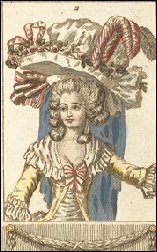column house divided affections


Townley had recently completed a splendid townhouse overlooking St. James’ Park with rooms specially designed for the finest collection of antiquities in England.
On the day they called on Townley they would have only seen an unpretentious brick house on the outside, hiding a museum of the Grand Tour inside. The large entrance hall and dining room overlooking the garden were sculpture galleries, crammed with treasures. Maria must have felt she was back in Rome. After the Hadfields had seen the ground floor, Townley took them up the curving staircase to his small library, which had no windows, but was well-lit from above. There were heads, statues, bas reliefs covering the walls, urns on the bookcases, a true connoisseur’s cabinet. After the tour of his collection Townley introduced Maria to some London artists and antiquarians of his acquaintance.
Two characters stood out from the rest. The first was a French antiquarian, who called himself Baron d’Hancarville. It was he who had published the sumptuous book on Sir William Hamilton’s collection. Now Townley was engaging him to help organise and catalogue his collection. This curious person was erudite and did have a deep knowledge of ancient civilisations, but he also had strange theories about influences on the Greeks from India and Persia.
Isabella Hadfield may have remembered his financial problems during his residence in Florence some years earlier. He put off his creditors by obtaining the Grand Duke’s patronage of a wild scheme to reorganise the fishing industry in Leghorn. Nothing ever came of it, and it was a mystery how he persuaded the Grand Duke that he, an antiquarian, knew anything about fishing. He had now re-emerged in London. As destiny would have it, this eccentric person would be a witness to important events in Maria’s life.
The second character was equally eccentric. He was a tiny individual – immaculately coiffed and elegantly dressed in embroidered satin. His waistcoat was a feast of red silk strawberries. The little man strutted and preened, was very lively, and made others laugh. He painted portraits in miniature, like himself. His name was Richard Cosway.
| reviews |
| Excerpt 1 |
| Excerpt 2 |
| Excerpt 3 |
| Excerpt 4 |